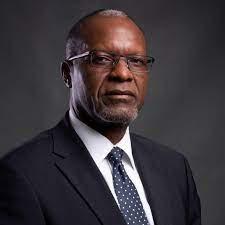German economics and climate minister Robert Habeck has appointed former energy state secretary Rainer Baake as special emissary for energy cooperation with Namibia, tasked with implementing the gigantic ramp-up of a green hydrogen economy in the Southern African country.
The investment volume for the first expansion stage of a plan to first produce green H2 from ultra-cheap wind and solar power, and convert it into green ammonia that can be shipped to Germany, roughly corresponds to Namibia’s current gross national product, the ministry said.
Namibia’s GNP (after a Covid-related dip) this year is expected to recover to a volume of $13bn, according to German market data company Statista.
“There is hardly a better place on earth to produce green hydrogen using wind and solar energy,” Habeck said. He added that onshore wind turbines would generate more power in Namibia than offshore wind machines in the North Sea, and that the yields of solar panels there are three times those in Germany.
The appointment of Baake follows a German-Namibian hydrogen cooperation agreement that closed in late March.
Baake currently is on a 10-day visit to Namibia to discuss details of the hydrogen ramp-up plan that includes projects for green ammonia production in the South of the country.
“Namibia will produce green ammonia that we urgently need in Germany for the decarbonisation of our industry,” Baake said.
Germany is Europe’s largest consumer of ammonia, a key raw material for industry that currently is still produced from fossil gas and last year caused the emission of 6 million tonnes of CO2.
“A cooperation therefore brings advantages both for Namibia and Germany,” Baake said. “It is a real win-win situation.”
As producing hydrogen from renewable power via electrolysis requires great amounts of water – a scarce resource in arid Namibia – the plan also foresees the construction of a desalination plant near the town of Lüderitz that is slated to be powered by renewable energy, and would also supply the local population with clean drinking water.
As hydrogen can’t be transported inexpensively with ships, Namibia plans to further process hydrogen into the easier-to-transport ammonia by adding atmospheric nitrogen. A new port facility is planned for shipping the green ammonia.
Hyphen a first mover
Hyphen, a joint venture between German developer Enertrag and South Africa’s Nicolas Holding has won a tender for the first expansion phase of the project.
Germany didn’t give details about what volumes of green hydrogen or ammonia are envisaged as part of the cooperation agreement, but said 15,000 jobs will be created during the construction phase, and 3,000 during operations.
Hyphen had earlier said it had been selected to build a 3GW green hydrogen project powered by 5GW of wind and solar energy in southern Namibia.
Baake also agreed with Namibia’s energy minister Tom Alweendo to carry out an expert investigation into how wind and solar capacities for hydrogen production can be integrated into Namibia’s power system.
“I see a great opportunity for Namibia to become the first African country with 100% renewable energy in the electricity sector still within this decade.”
That would allow the country to stop the import of electricity from coal-fired power plants in South Africa, Baake stressed, and help the country in its coal exit.
Baake is a veteran energy and climate expert, and has been state secretary in both Germany’s environment and its energy ministry. He also has worked as head of the Agora Energiewende think-tank, and in his latest function led Germany’s Climate Neutrality Foundation.

